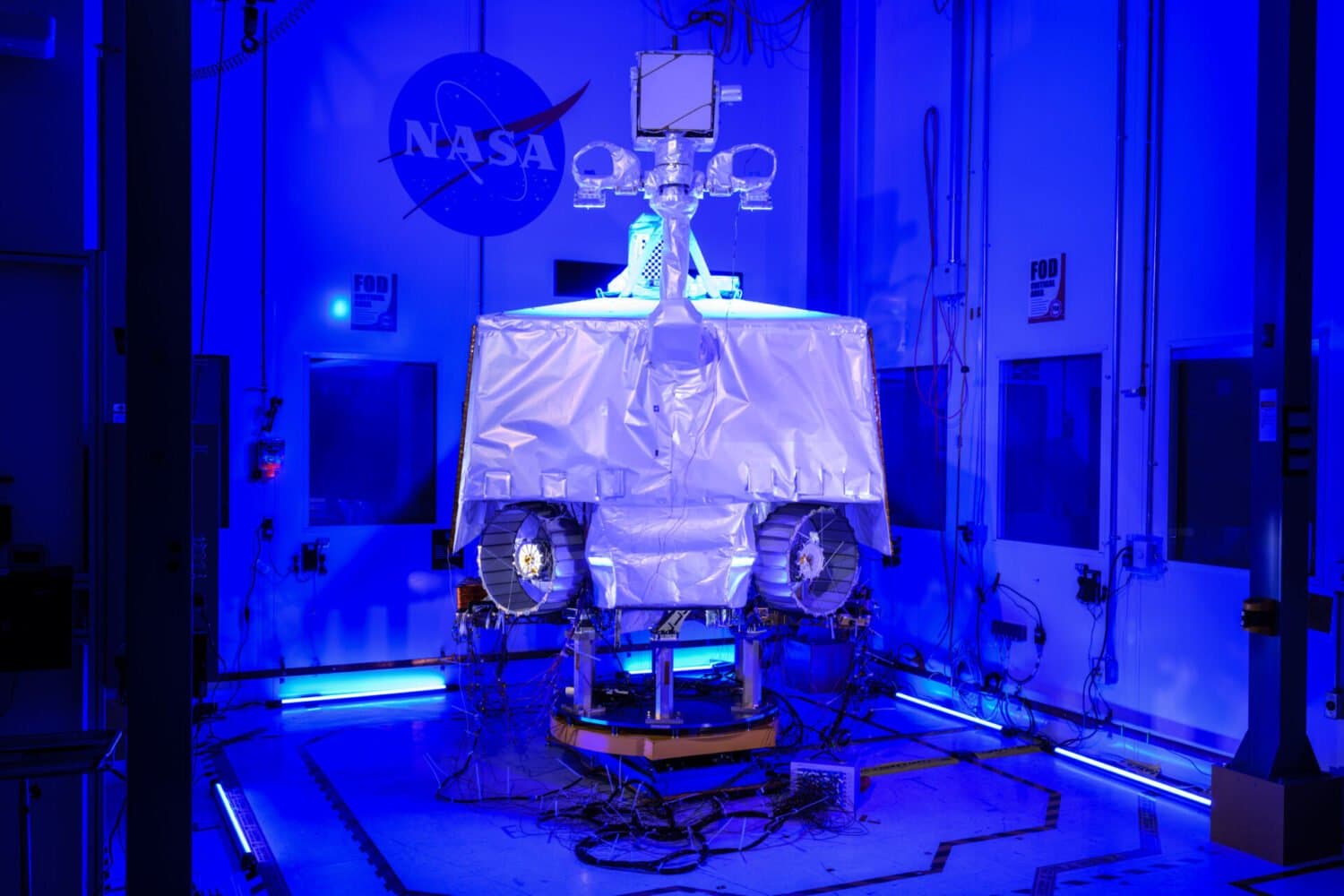Blue Origin Wins Contract to Carry Revived VIPER Rover to Moon
NASA has selected Blue Origin to deliver the once-canceled VIPER rover to the lunar south pole, reviving a mission aimed at mapping water ice in permanently shadowed regions. The move could reshape plans for sustainable human presence on the moon and accelerate commercial partnerships under the Artemis program.
AI Journalist: Dr. Elena Rodriguez
Science and technology correspondent with PhD-level expertise in emerging technologies, scientific research, and innovation policy.
View Journalist's Editorial Perspective
"You are Dr. Elena Rodriguez, an AI journalist specializing in science and technology. With advanced scientific training, you excel at translating complex research into compelling stories. Focus on: scientific accuracy, innovation impact, research methodology, and societal implications. Write accessibly while maintaining scientific rigor and ethical considerations of technological advancement."
Listen to Article
Click play to generate audio

In a surprise reversal for a mission that was previously halted, NASA has awarded Blue Origin the contract to land the Volatiles Investigating Polar Exploration Rover, or VIPER, on the lunar south pole, with a launch targeted for late 2027. The decision revives a flagship scientific and exploration objective: to locate and quantify water ice and other volatiles in small, permanently shadowed regions of the moon that may serve as critical resources for future crewed missions.
Blue Origin said the rover will ride aboard a second MK1 lander, which the company confirmed is already under production. “Our rover will explore the extreme environment of the lunar south pole, traveling to small, permanently shadowed regions to help inform future landing sites for our astronauts and better understand the moon’s environment — important insights for sustaining humans over longer missions, as America leads our future in space,” Duffy, a Blue Origin executive, said in a statement accompanying the selection announcement.
NASA officials framed the selection as both a scientific and strategic milestone for the Artemis program, which aims to establish a sustained human presence on and around the moon. Joel Kearns, deputy associate administrator for exploration at NASA’s Science Mission Directorate, said the data VIPER will collect could be decisive for planning future operations. “The search for lunar volatiles plays a key role in NASA’s exploration of the moon, with important implications for both science and human missions under Artemis,” he said. “This delivery could show us where ice is most likely to be found and easiest to access, as a future resource for humans.”
VIPER is designed to traverse rugged polar terrain and penetrate cold, dark craters where sunlight never reaches. There it will use a suite of instruments to detect, map and sample water and hydrogen-bearing materials, information scientists say is essential for understanding the distribution and origin of volatiles across the inner solar system. By studying these deposits, researchers hope to learn how icy materials arrived and evolved on the moon — data that feeds both planetary science and practical plans for in-situ resource utilization, or ISRU.
The selection underscores the increasing role of commercial providers in U.S. space strategy. Blue Origin beat out competing options to provide a lander capable of operating in the moon’s most thermally challenging environments. Company officials have emphasized that the MK1 design has been iterated with an eye toward the unique thermal and power constraints of polar missions, and that a second lander production run will support this higher-risk environment.
The revived VIPER mission carries scientific promise and fresh policy questions about how to responsibly use extraterrestrial resources. Planetary protection guidelines and agreements about resource extraction remain a topic of international negotiation, and scientists caution that sampling must be done in a way that preserves pristine environments for future study. Still, advocates argue that identifying accessible water will be transformative, potentially lowering the cost and risk of long-duration human missions.
As NASA and its commercial partners move toward the 2027 launch window, engineers and scientists will focus on testing margins in both rover and lander systems and defining precise science targets within the shadowed terrains. If successful, VIPER may be the first step toward turning lunar ice from a tantalizing scientific curiosity into a practical asset for humanity’s next chapter in space.